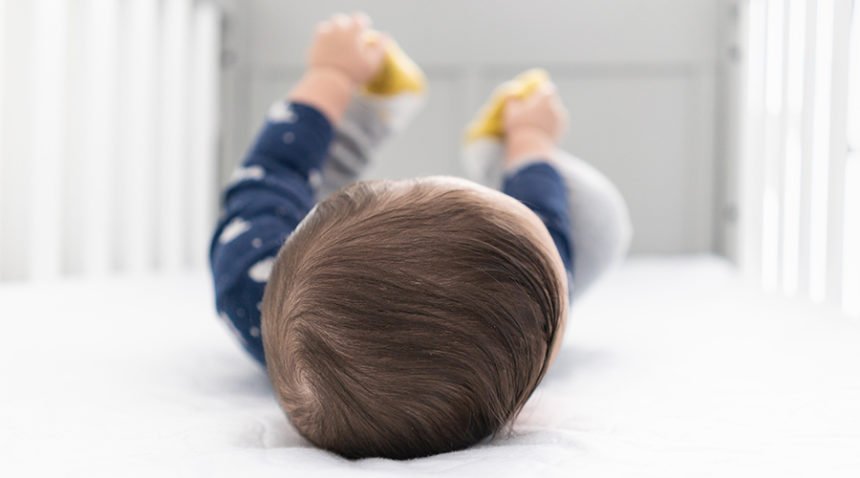Fortunately, babies and toddlers aren’t aware of the challenging time we’re facing right now, but the importance of protecting them during the coronavirus disease 2019 (COVID-19) pandemic weighs heavily on the minds of their parents.
Children do not appear to be at higher risk for COVID-19 than adults. Most cases have been in adults, but kids can still contract the virus and experience serious illness.
UNC Health pediatrician Miriam Medero-Eng, MD, shares tips on how to keep your little ones safe during this unpredictable time.
COVID-19 Symptoms in Babies and Toddlers
For adults and children, COVID-19 symptoms are generally the same and can include:
- Cough
- Fever (100.4 degrees or higher)
- Shortness of breath
- Sore throat
- Nasal congestion or runny nose
- Loss of sense of taste or smell
- Chills
- Muscle pain
- Headache
- Diarrhea
Some proportion of people who are carriers of the virus do not show any symptoms.
There are additional signs a parent of a very young child should know, Dr. Medero-Eng says.
“With babies, we want to see how they are acting. If the baby starts to look lethargic, and is not eating as well, a pediatrician needs to be notified. If a baby is showing signs of respiratory distress and having difficulty breathing, a parent should call 911.”
It’s very important to call your child’s pediatrician if you suspect COVID-19 or any other potentially serious condition. Using virtual care, parents can meet with their providers and show them the physical signs of their child’s illness. For example, babies in respiratory distress will often flare their nostrils.
“I’ve done several video visits with parents teaching them how to look for shortness of breath,” Dr. Medero-Eng says. “I tell them to look at the baby’s rib cage to see if any muscles are being pulled in while trying to breathe. If they see that pulling in around the rib cage, that would be a sign of a more advanced disease and they would need to be seen.”
For infants ages 2 months and younger, it’s important for parents to contact their pediatrician right away if the baby has a fever of 100.4 or higher, Dr. Medero-Eng says. A fever is sometimes the only sign of a viral or bacterial infection, which can be serious in very young infants.
For older babies and toddlers, it’s best to contact your child’s pediatrician if there are signs of a fever, runny nose and cough. Nausea, vomiting and diarrhea are also possible indicators of COVID-19.
“We will talk about whether there needs to be a video visit or a telephone visit, or if they need to be directed to an urgent care, emergency room or respiratory diagnostic center,” Dr. Medero-Eng says.
If the pediatrician believes the child might have COVID-19, he or she will take a sample of nasal secretions from the back of the nose and throat for testing.
Treating Respiratory Symptoms in Babies and Toddlers at Home
If your young child begins to show cold or flu-like symptoms, you can do things at home to make him or her more comfortable. For congestion and runny noses, use nasal saline drops and bulb suction to clear the nasal passages. The cool mist from a humidifier or steam from a shower can help ease coughing and loosen the buildup of mucus.
“When a person lays on their back, the mucus will drip to the back of their nose and throat, which will increase coughing and discomfort. Holding the baby upright can help with that,” Dr. Medero-Eng says.
If a baby older than 2 months has a fever, keep the room cool and dress the child in light clothing. Parents can also give the baby a sponge bath in lukewarm water or apply lukewarm compresses to the forehead to help bring the fever down.
If taking these measures at home does not ease your child’s symptoms, contact your pediatrician.
Practicing Safe Habits at Home
While practicing physical distancing (also known as social distancing) and staying home, it’s imperative for parents to teach good habits to their children. Just like adults, children should wash their hands often with soap and water for at least 20 seconds. Washing toys with soap and water or using disinfecting wipes on them (and then rinsing with water after to avoid the child touching or consuming chemicals) can help reduce the spread of germs.
“If a child is sick, keep that child away from other children as much as possible. Do not let siblings drink out of the same cup, keep pacifiers clean, keep their hands clean, and make sure surfaces, including floors, are clean and wiped,” Dr. Medero-Eng says.
It’s also important that parents set the tone for emotional health, too. The message should be: If we take this seriously and practice hand hygiene and other precautions, we don’t need to be fearful, Dr. Medero-Eng says.
“While at home, enjoy that time with your children and do not hesitate to reach out to your physician with any questions.”
For the latest information on COVID-19, visit the CDC website and the UNC Health COVID-19 Resources page, and follow UNC Health on Twitter, Facebook, Instagram and YouTube.

